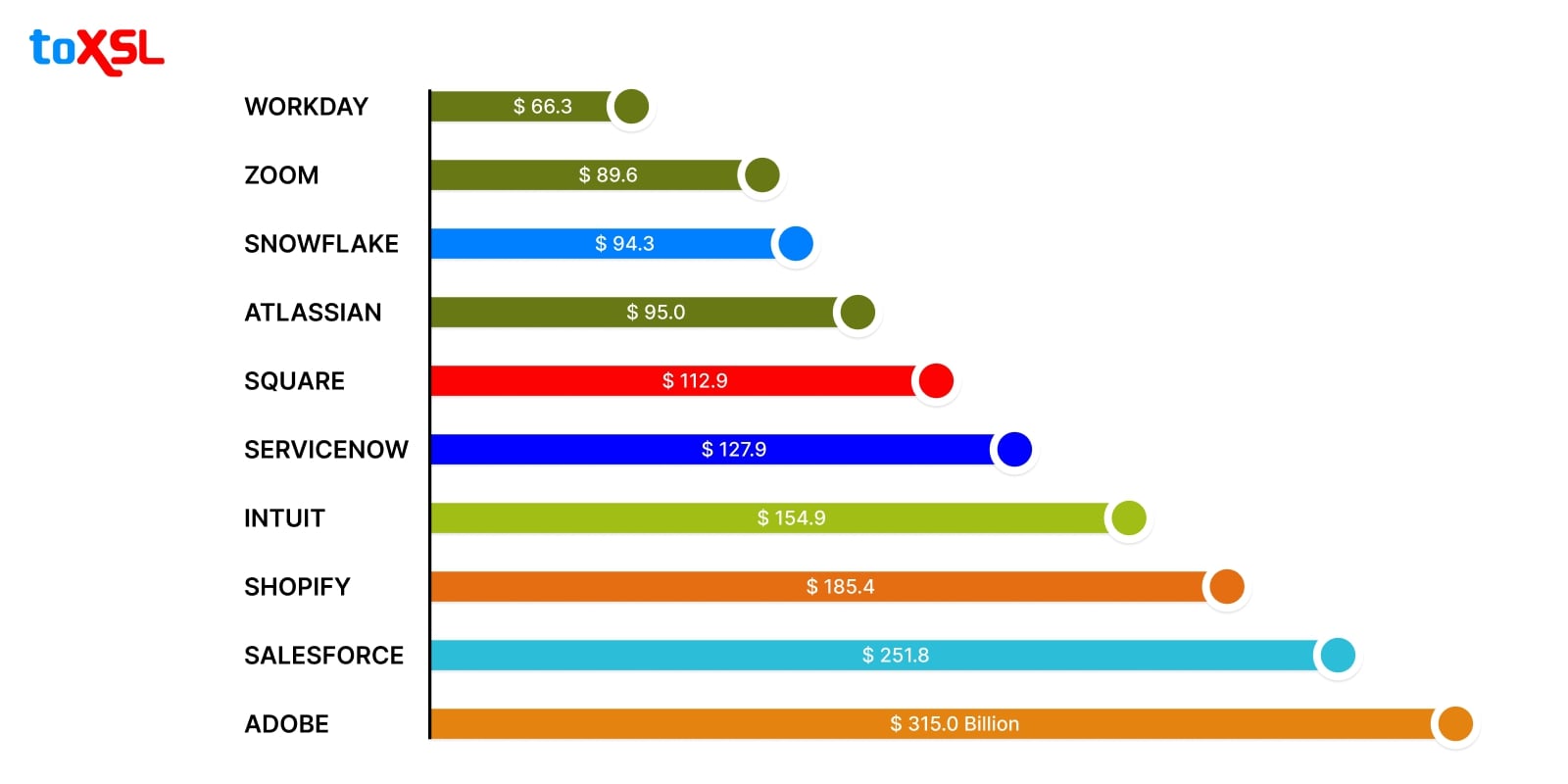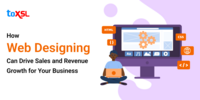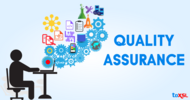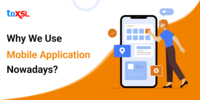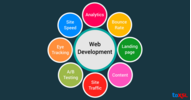- Dec 27, 2025
- SaaS
- 4617
Share this post on:
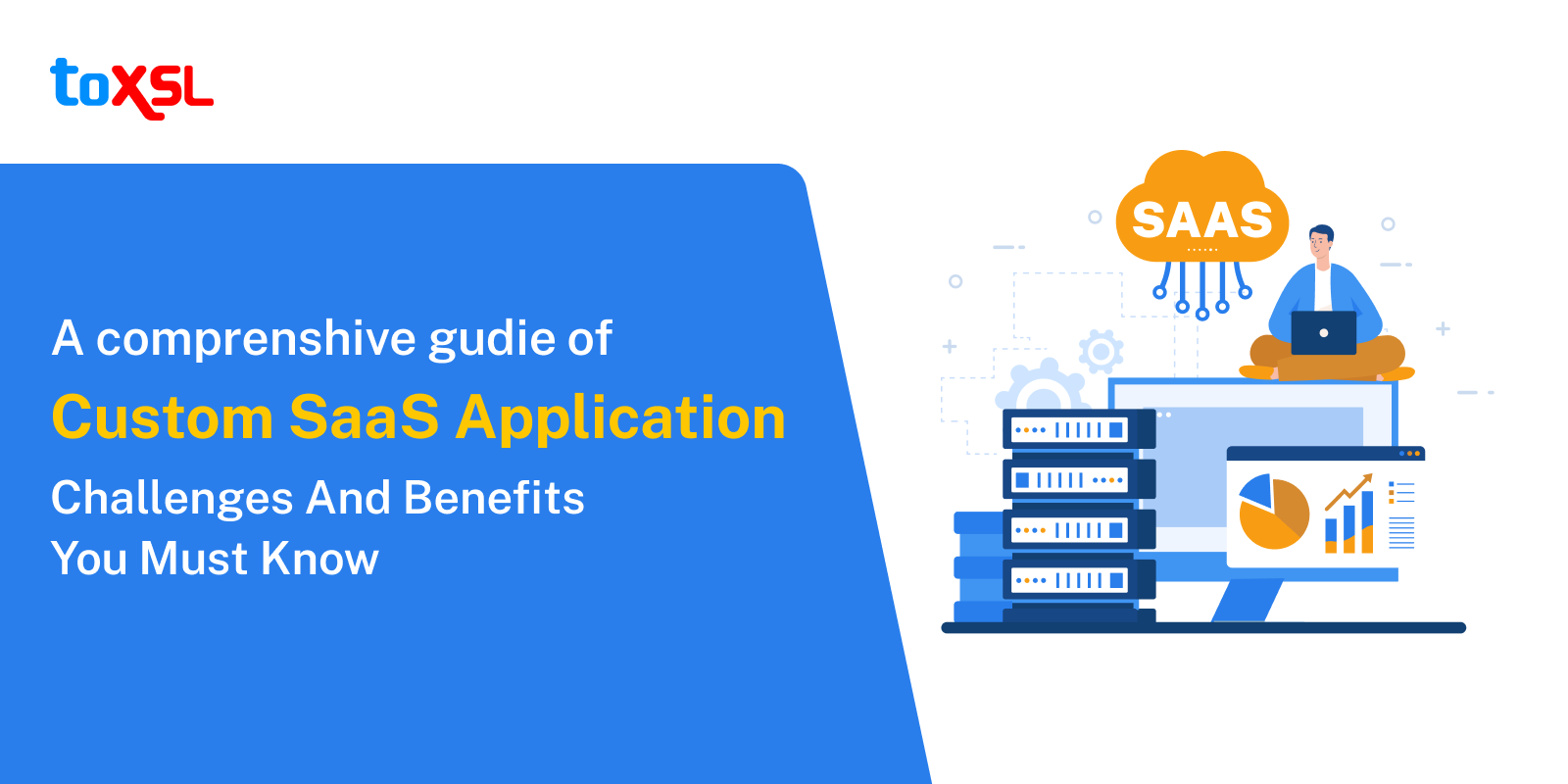
In the era of cloud computing and digital transformation, Software as a Service (SaaS) has become a dominant software delivery model for businesses of all sizes. According to industry reports, the global SaaS market is projected to exceed $300 billion by 2026, growing at a compound annual growth rate (CAGR) of over 18%. Additionally, studies show that nearly 99% of organizations now use at least one SaaS solution, highlighting how deeply SaaS is embedded in modern business operations.
While ready-made SaaS products offer speed and convenience, they often fall short when it comes to addressing unique business workflows, scalability requirements, and integration needs. In fact, research indicates that over 60% of enterprises feel limited by the customization options of off-the-shelf SaaS platforms. This growing gap has fueled the demand for custom SaaS applications, tailor-made solutions designed to align perfectly with specific business objectives.
Key Takeaways
• Custom solutions allow businesses to implement their own security protocols, ensuring that sensitive data is protected according to specific standards.
• Custom SaaS apps are developed to integrate with your current software stack, improving overall efficiency and data flow across systems.
• Developing a custom SaaS app involves upfront costs, but it can deliver long-term savings.
• Custom apps need continuous maintenance, updates, and support to ensure smooth operation.
Understanding SaaS
Software as a Service (SaaS) is also referred to as application service provider or software on-demand and others. It is a cloud-based solution that used both mobile applications and browsers. CRM and ERP are two of the most popular examples of SaaS applications. SaaS applications do not require the customers to use their server hardware, rather it allows them to access ready-to-use software and that too has access on any device as the heavy lifting is done in the cloud. Here are some of the quick stats that impact your businesses:
- The SaaS market will reach $436.9 billion by 2025, a CAGR (compound annual growth rate) of 12.5%
- Nearly 78% of small businesses have already invested in SaaS options.
- Around 70% of the CIOs claim that scalability and agility are the two factors that motivate businesses to use SaaS applications
- Adoption in the SaaS healthcare industry continues to grow every year by 20%
- Shopify, a SaaS-based online platform, grew from the beginning of 2020 from $52.1 billion to over $185 billion today, and the amount continues to increase.
Have a glance at the popular SaaS companies.
Now, as we have discussed what SaaS exactly is and how its adoption continues to grow, let us quickly go through the benefits of implementing Saas for the business.
How does SaaS help with business growth?

The subscription-based models are primarily being adopted by businesses to satiate their needs, and SaaS continues to embrace its models to satisfy diverse needs with agile and robust solutions. Here are the crucial benefits of SaaS you must be aware of.
1. Initial Investment is low
When it is to cloud services, the upfront costs are low because you don’t have to invest in hardware, its maintenance, and more. It is a subscription-based model that offers packages as per the storage. So, in a nutshell, it offers businesses a pay-as-you that makes it easy for businesses to enter into the realm with ease and invest.
It makes it one of the crucial reasons why SaaS development has a higher demand. Also, it eliminates any risk of monetary loss in the business.
2. Robust Security
Security-related issues are majorly faced by organizations, but thanks to the cloud service provider that offers efficient solutions and solves all such issues. It ensures all the information and data are well protected and stored safely.
A Gartner report suggests that security concerns and issues arise due to phishing and malicious activities (a result of human error), therefore the cloud becomes a safer place businesses can rely on. The service provider must ensure that the applications are running smoothly and have a secure environment. With the cloud, it is no longer difficult to maintain servers across different locations as well.
3. Offers Scalability
SaaS-based platforms are loved as it offers complete control of the platform, no matter what is the location of the user. Everything can be maintained from a single place, also it serves a large number of users, bringing more traffic for the growth of your business.
Also, as it has a subscription-based model, businesses can upgrade any time they want. When the requirement of the business change, it becomes more convenient for businesses to upgrade their packages with simply a few clicks. The adaptiveness of the businesses ensures the possibility to scale the SaaS solution and expand the business.
4. Saves Time
Talking about the traditional ways where the users had to face complexities with buying, managing, installing, and upgrading the software by themselves. Trust me, this process brings hassle and there is more time-consuming. But with SaaS providers, instantly manage and maintain the application via cloud storage services.
5. Feature Rich
When it is to the traditional systems, it is time-consuming for the businesses to upgrade across multiple levels and often becomes a headache for them. Therefore, integrating the cloud rolls out the updates as soon as possible and makes room for improvement without any holdbacks and delays. So whenever there is an update, you can quickly leverage the usage of the new features and make better and more informed business decisions.
SaaS development ultimately offers a suite that will allow businesses to enjoy the best of features.
Top SaaS Development Challenges you should know
With SaaS app projects gaining immense popularity, like CRM, ERP, and other project management software, businesses do face plenty of challenges during the process. Let us discuss all of them in detail.
1. Third Party Payment Integration
Custom payment integrations are crucial in the SaaS and can be simply achieved by integrating your system with third-party services. Integration includes simplified and complex processes and challenging ones. The easy one offers great support for the integration whereas, in the challenging one, you need to examine all the technical aspects and challenges for the payment integration.
The payment solutions expose the necessary libraries you need to integrate. A few of the services include PayPal, QuickPay, Braintree, and more.
2. Managing the Subscription Lifecycle
Handling the SaaS-based subscription and plans is easy with the ready solutions. The solutions can be seamlessly integrated with payment services, similar to what happens in Stripe. Whether it is exposing API to be used by SaaS or others, Stripe follows a clear-cut approach.
For the developers to manage the subscription plans, they must rely on pre-built and ready-to-use solutions that streamline the management of payment and subscriptions. SaaS subscription life cycle has subscription options, upgrading, resubscribing and more. Every part here needs to be managed, which ensures seamless integration of the billing system in SaaS.
3. To ensure zero-downtime Deployment
It is another pain point for the developers. When the new version is released, the system is not completely accessible. Of course, the availability of the system is vital and seasoned developers can easily benefit from the zero-downtime deployment strategy. Put throughout the deployment process and let the services remain fully responsive.
In traditional systems, the app will inform the user about scheduled downtime. SaaS becomes one of the most preferred strategies as it guarantees zero downtime and is more reliable. Also, there are fewer risks associated when you rely on SaaS.
Step-by-Step Guide to SaaS Product Development

So, now that you are aware of the preliminary issues of the SaaS application development, let us clearly understand the complete process of the SaaS development cycle.
1. Effective Roadmap
An effective roadmap includes research and analytics, robust planning, and seamless communication with the client. To bring more customer attention, businesses must plan to offer a solid solution. Let the customers understand the product value before they subscribe or pay for the services.
Strategic planning allows the developer to give an estimate in terms of solution development deadline and also when you communicate with the client, it becomes vital for the developers to give a clear understanding of their SaaS product to the developers. Engaging strategic planning consultants can further help align project goals, timelines, and client expectations for a smoother development process.
2. Market Research and Competitor Analysis
When you plan to build your SaaS product, you must consider what the market follows on the same, and also it is vital to understand what the target audiences are looking for. It is vital to analyze your competitors, what business model they follow, the features they integrate, and so on.
Analyzing the market will help you realize and follow the process seamlessly and makes your solutions stand out from the existing service provider.
3. Specify the Project Requirements
Gather the complete details of the project and know your requirements accordingly. Businesses need to create a robust set list of features and functionalities that ensures robust project development.
4. Ensure simple UI/UX
UX is simply the creation of a blueprint for your application, and UI means the visual appearance and feel of the application. It is vital to ensure a simplified UI/UX that makes your SaaS application more user-friendly while allowing customers to navigate easily.
To make your SaaS application a success, you must create applications with a user-friendly design.
5. Development and Testing
Now is the time to finally bring your ideas to life. With a collaboration of developers and architects and the most popular development methodologies, it is vital to ensure a feature-driven development. The approach must be strategic and developers must ensure using an appropriate technology stack.
Once the development process is completed, it is time to ensure the quality of the product with rigorous quality testing.
6. Product launch and Maintenance
After the development process, the product is deployed and your story begins. Also, routine-based maintenance and database upgrades are vital to make it reliable, responsive, and effective.
Cost for SaaS Application Development
Cost is one of the key factors every business of course is worried about. Well, choose to outsource your project to ToXSL where we have a team of robust developers, designers, testers, and others who work on your projects to deliver dedicated results.
Here is a quick analysis of what businesses have to pay when they look forward to developing a SaaS-based mobile application.
- Business Analysis and Design: $1500-$2500 every month
- For development and support, you will have to pay around $15000 or $20000 depending on features.
Winding-up!
Moving to the cloud has become a necessity for businesses in the fast-growing technical world, and it continues to offer them a hassle-free experience and more security. Almost every organization, no matter big or small, include Google, Microsoft, and others.
In a nutshell, businesses can easily be managed by cloud servers and their organization becomes more efficient. So if you are planning to take your business to the cloud and looking forward to developing a SaaS-based mobile application, you can explore the best possibilities with a leading custom mobile application development company, ToXSL! We can help you overcome all the potential challenges while helping you offer the best.
Frequently Asked Questions
1. How long does it take to develop a custom SaaS application?
The development time depends on the complexity of the application, but typically it can take several months to over a year to develop, test, and deploy a custom SaaS solution. A detailed project plan and clear requirements can help expedite the process.
2. Is a custom SaaS application more expensive than off-the-shelf software?
Yes, custom SaaS applications typically have higher upfront costs due to the need for development, testing, and deployment. However, in the long term, they can save costs by providing more value and better scalability.
3. What are the key features of a custom SaaS solution?
Key features of custom SaaS solutions include tailored functionality, seamless integration with existing systems, scalability, enhanced security, and a user interface designed to meet the specific needs of the business.
4. What are the security considerations for a custom SaaS application?
Security is a critical consideration for custom SaaS solutions. Businesses can implement specific security measures, such as data encryption, role-based access control, multi-factor authentication, and regular security audits.
5. Can a custom SaaS application be scaled easily?
Yes, one of the primary benefits of custom SaaS is its scalability. The application can be developed to handle growing user bases and data volumes, with the ability to add new features or services as needed.
6. What is the ROI of custom SaaS development?
The ROI of custom SaaS development can be significant in the long term, as the software can improve operational efficiency, reduce overhead, and provide a competitive edge. However, businesses should be prepared for higher initial costs.


